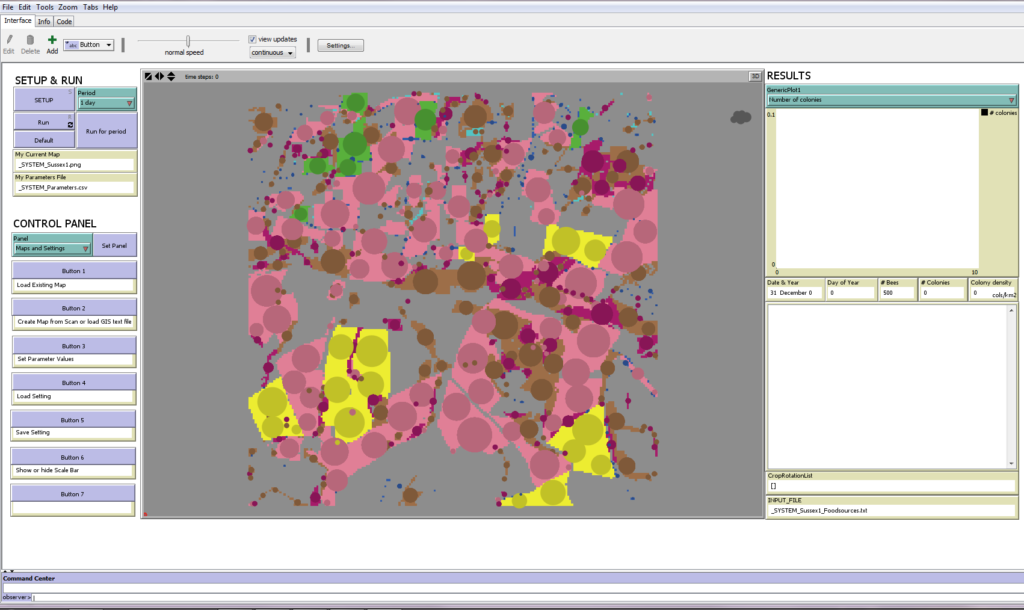Our new model, BEE-STEWARD Beta is ready to be tried and tested. BEE-STEWARD is a computer program of virtual bees in digital landscapes developed by researchers at the Environment and Sustainability Institute at the University of Exeter that can be used to predict the effects of different land management on pollinator survival and pollination rates.
We have been joining forces with forward thinking farmers, land managers and land advisors, working together to make sure BEE-STEWARD benefits bees and business on the ground.
BEE-STEWARD Beta provides a user-friendly interface to the bee behaviour models Bumble-BEEHAVE and BEESCOUT.
Some of the key new BEE-STEWARD Beta features:
Integrated mapping and simulation. Now you can upload, edit and save landscape and farm maps and then run simulations on these in the one BEE-STEWARD Beta program.
A streamlined interface. The BEE-STEWARD interface has been simplified and streamlined. There is one “control panel” which displays your options which changes depending on what task you are conducting.
Countryside Stewardship Options. You can choose from three key Wild Pollinator and Farm Wildlife Package (WPFWP) Countryside Stewardship options; margins, plots and legume fields and select the area or margin width and length. You can also see the percentage of your farm area that is dedicated to these CS options. Other Stewardship options can be implemented by changing the habitat type e.g. type of grassland.
Crop rotation. You can run the model through as many years as you need with different maps representing different crop rotation options. We have also added cereal crops to the model so then Countryside Stewardship options can be applied to this crop type
An automatic report. We have added a simple automatic report which can compare the numbers of bumblebee colonies and pollinators in your landscape as a result of two different management options over 5 years. More advanced users can still use BehaviorSpace to compare management options over longer time periods.
GIS compatibility. So we can work better with land advisors and conservation charities we have adapted the model so then it can read in a Geographical Information System (GIS) produced text map (ASCII).
Infinity habitat types. We changed the model from using nine key habitat types to infinity habitat types so then you can include as many as you require, as long as you have information on what flowers are available in these habitats.
BEE-STEWARD Beta runs on the free software NetLogo (version 5.3.1). BEE-STEWARD Beta is no longer available for download but BEE-STEWARD is coming soon!


